Weathering and Erosion Worksheet Activity
Are you searching for an engaging and informative activity to teach your students about weathering and erosion? Look no further! Our Weathering and Erosion Worksheet Activity is specifically designed to captivate and educate students on this important science topic. With clear instructions and thoughtful questions, this worksheet will help your students grasp the concepts of weathering and erosion while also developing critical thinking skills. Whether you are a teacher looking for a classroom activity or a parent seeking an enriching educational resource for your child, this worksheet is the perfect tool to engage and educate students on the fascinating processes of weathering and erosion.
Table of Images 👆
- Free Weathering and Erosion Worksheets
- Weathering and Erosion Worksheets 4th Grade
- Weathering and Erosion Worksheet
- Weathering Erosion and Deposition Worksheets
- Weathering and Soil Formation Worksheet
- Erosion and Deposition Worksheet
- Weathering and Erosion Test
- Weathering and Erosion Worksheets.pdf
- Weathering and Erosion Worksheet Answers
More Other Worksheets
Kindergarten Worksheet My RoomSpanish Verb Worksheets
Cooking Vocabulary Worksheet
DNA Code Worksheet
Meiosis Worksheet Answer Key
Art Handouts and Worksheets
7 Elements of Art Worksheets
All Amendment Worksheet
Symmetry Art Worksheets
Daily Meal Planning Worksheet
What is weathering?
Weathering is the process by which rocks and minerals are broken down into smaller pieces by physical, chemical, or biological means. This can occur through processes such as the expansion and contraction of rocks due to temperature changes, the effects of water and ice, the actions of plants and animals, and chemical reactions with substances in the environment. Weathering plays a key role in shaping the Earth's surface over long periods of time.
What are the two main types of weathering?
The two main types of weathering are mechanical weathering, which involves the physical breakdown of rocks into smaller pieces without changing their chemical composition, and chemical weathering, which involves the decomposition of rocks due to chemical reactions that alter their composition.
How does physical weathering occur?
Physical weathering occurs through processes such as freeze-thaw cycles, where water seeps into cracks in rocks, freezes, expands, and ultimately forces the rock to break apart. Another common mechanism is abrasion, where rocks and sediments are physically worn down and broken apart by the movement of wind, water, ice, or gravity. Additionally, plant roots can grow into cracks in rocks, exerting pressure and causing them to break. These processes break down rocks into smaller pieces without changing their chemical composition.
What are three examples of physical weathering processes?
Three examples of physical weathering processes are freeze-thaw cycles, exfoliation, and abrasion. Freeze-thaw cycles occur when water seeps into cracks in rocks, freezes and expands, causing the rock to break apart. Exfoliation is the process where outer layers of rock peel away due to pressure release when overlying rocks are eroded. Abrasion happens when rocks are physically worn down by friction from wind, water, or other materials.
What is chemical weathering?
Chemical weathering is the process by which rocks and minerals are broken down and altered through chemical reactions, leading to their decomposition or dissolution. This type of weathering occurs when minerals within the rock react with elements in their environment, such as water, oxygen, and acids, causing them to weaken and break down over time.
How does chemical weathering occur?
Chemical weathering occurs when minerals in rocks are broken down and transformed through chemical reactions with substances such as water, oxygen, carbon dioxide, and acids. These reactions result in the weakening and dissolution of minerals, leading to the physical breakdown of the rock into smaller pieces over time. Factors such as temperature, moisture, and the presence of certain minerals can influence the rate and extent of chemical weathering processes.
What are three examples of chemical weathering processes?
Three examples of chemical weathering processes are hydrolysis, oxidation, and dissolution. Hydrolysis involves the breakdown of minerals through a reaction with water. Oxidation occurs when minerals react with oxygen in the air, leading to the rusting or discoloration of rocks. Dissolution results from the dissolution of minerals into water, often leading to the formation of caves in limestone rocks.
What is erosion?
Erosion is the process of wearing away or breaking down of rocks, soil, or other materials on Earth's surface by the action of natural forces such as wind, water, ice, or gravity. It leads to the removal and transportation of particles and can reshape landscapes over time.
What are four agents of erosion?
The four agents of erosion are water, wind, ice (glaciers), and gravity. These natural forces continuously shape and change the Earth's surface by wearing down and carrying away rocks and soil.
How do weathering and erosion contribute to changes in Earth's surface?
Weathering and erosion work together to shape and change Earth's surface by breaking down rocks and transporting the resulting sediment. Weathering breaks down rocks into smaller pieces through mechanical processes like freeze-thaw cycles and chemical processes like acid rain. Erosion then carries away the smaller pieces, transporting them to new locations through agents like water, wind, or ice. Over time, these processes sculpt landscapes, create landforms, and reshape the Earth's surface.
Have something to share?
Who is Worksheeto?
At Worksheeto, we are committed to delivering an extensive and varied portfolio of superior quality worksheets, designed to address the educational demands of students, educators, and parents.

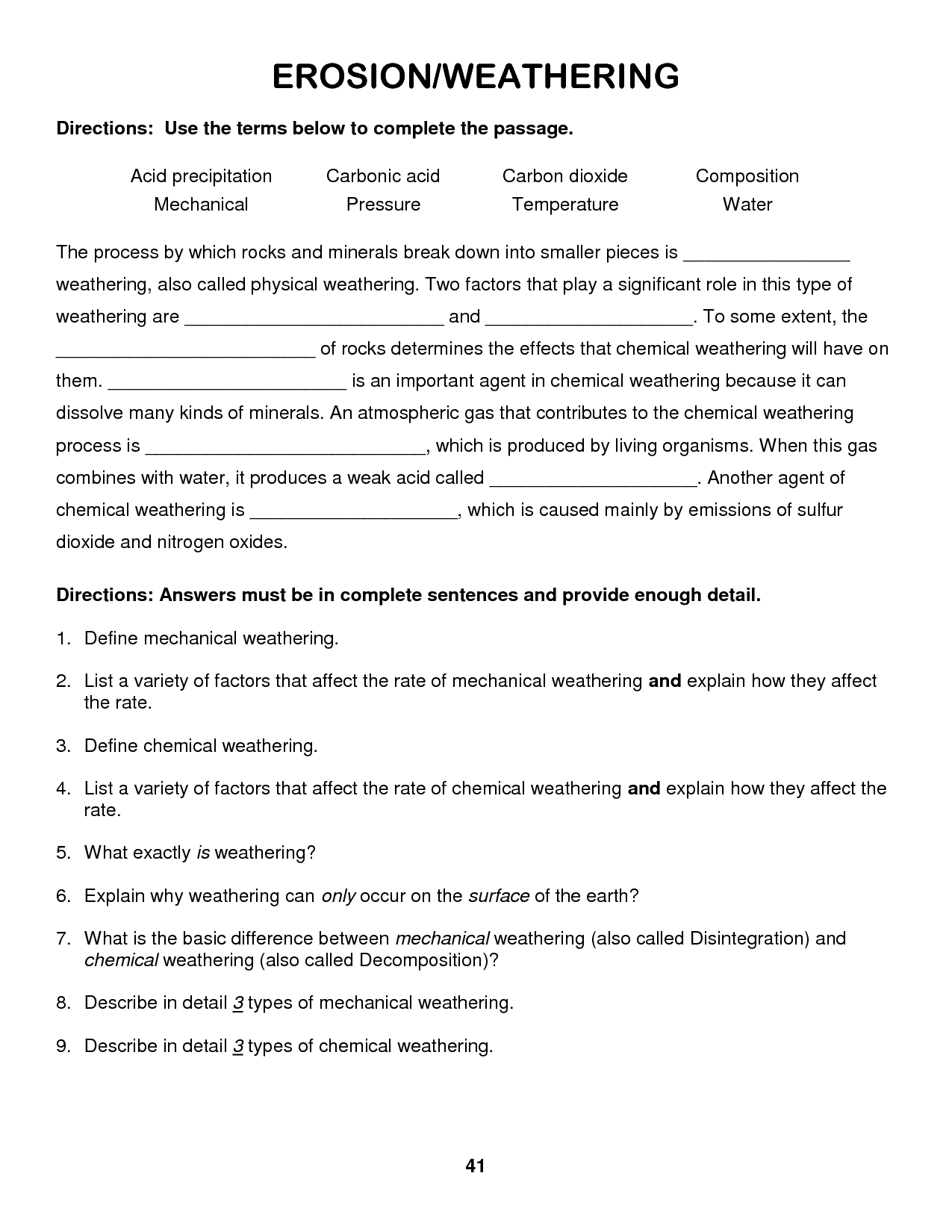




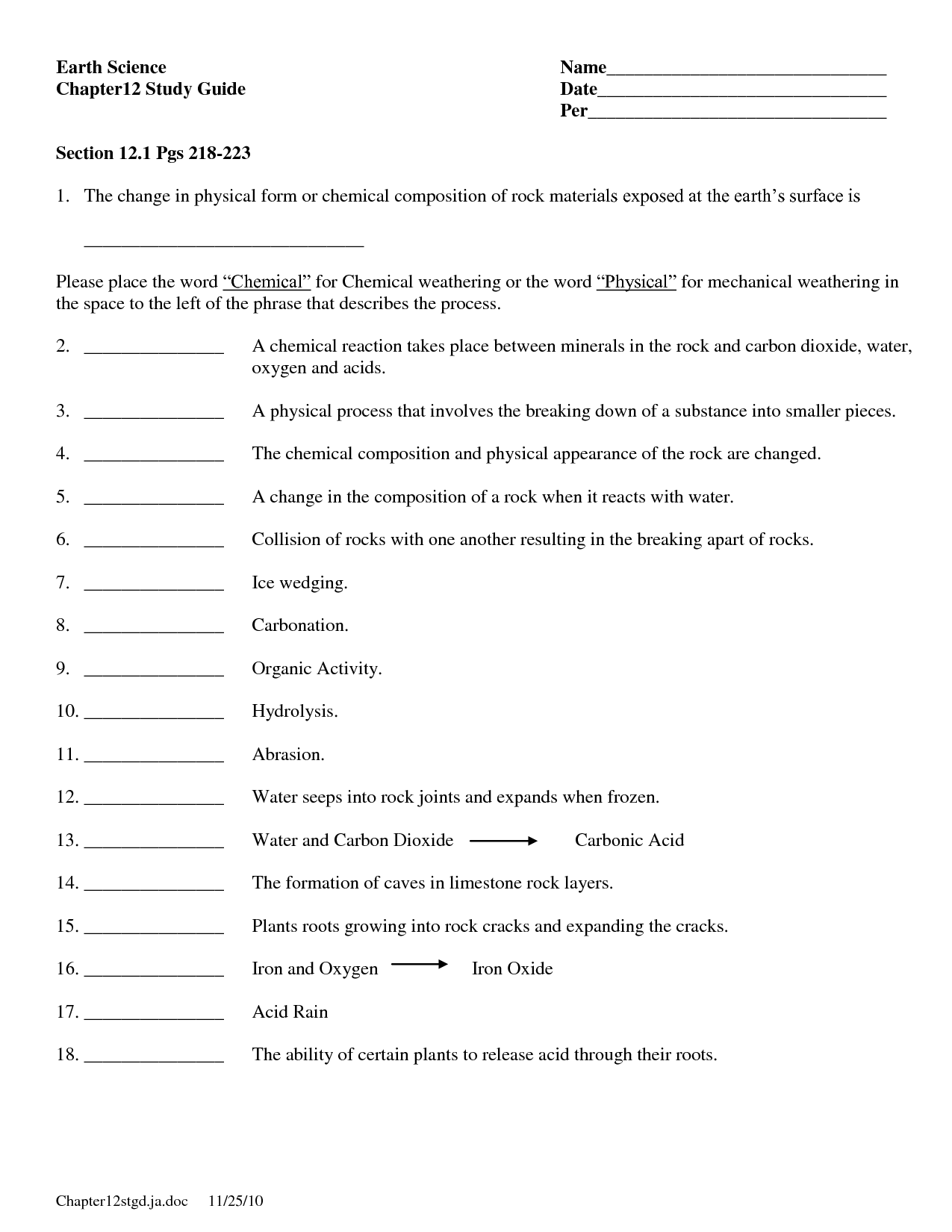

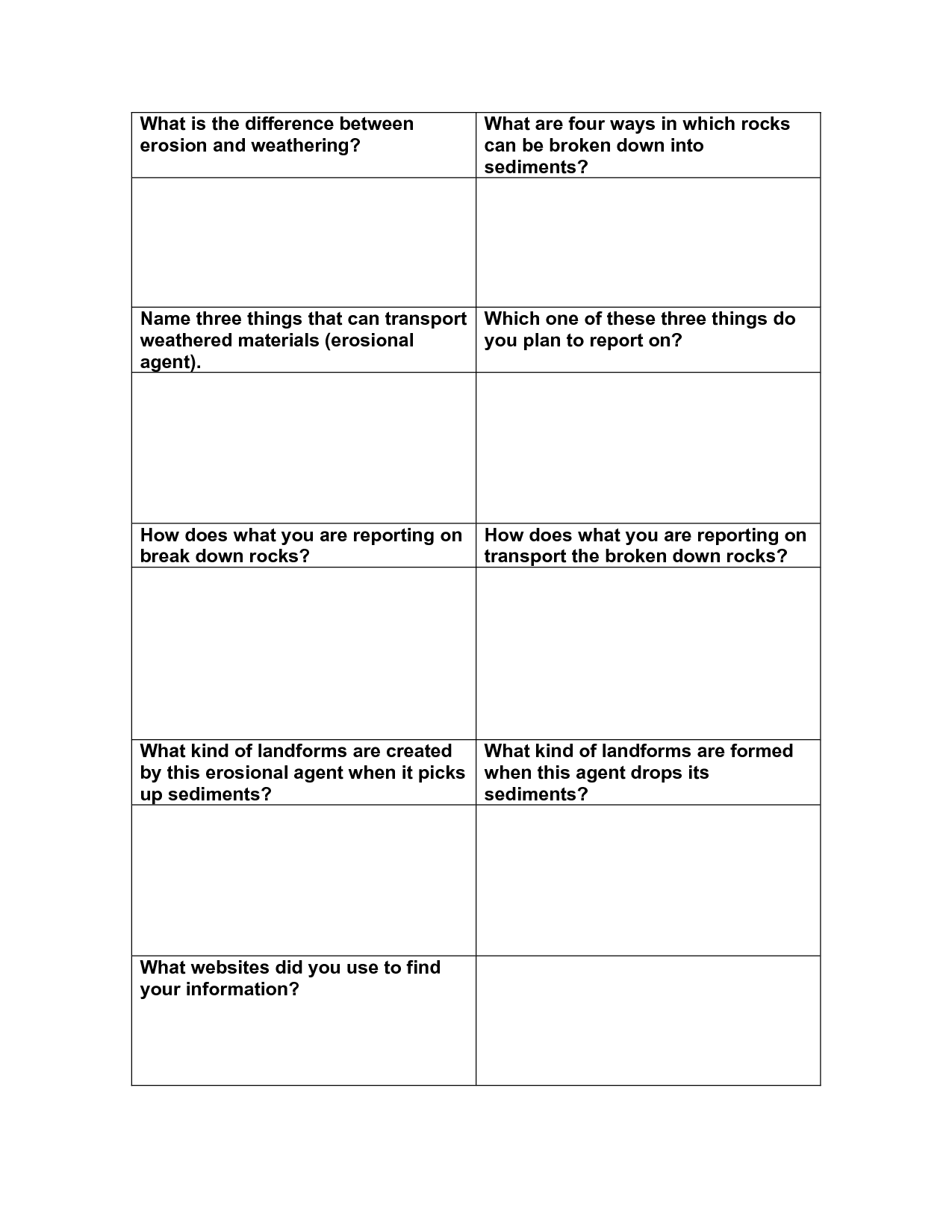
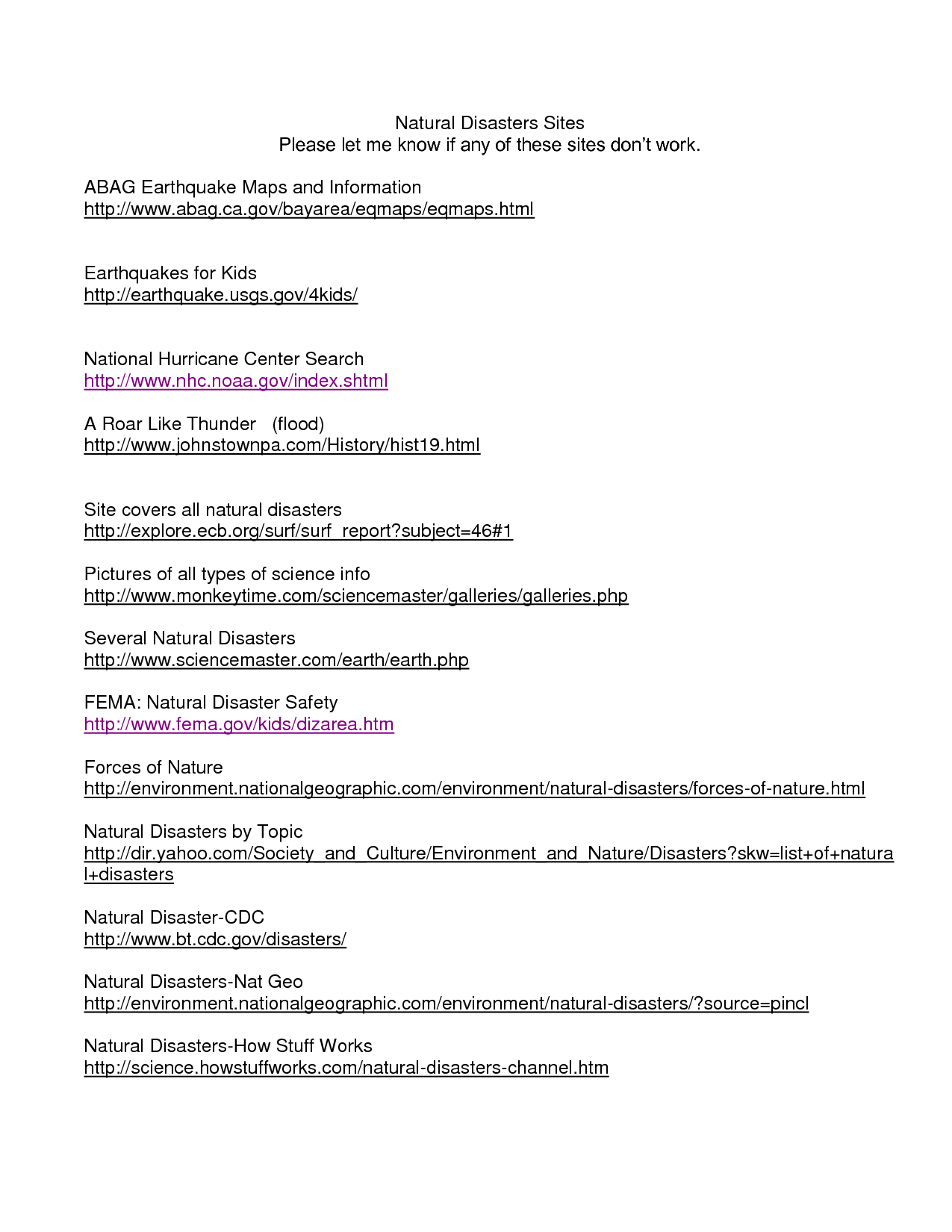
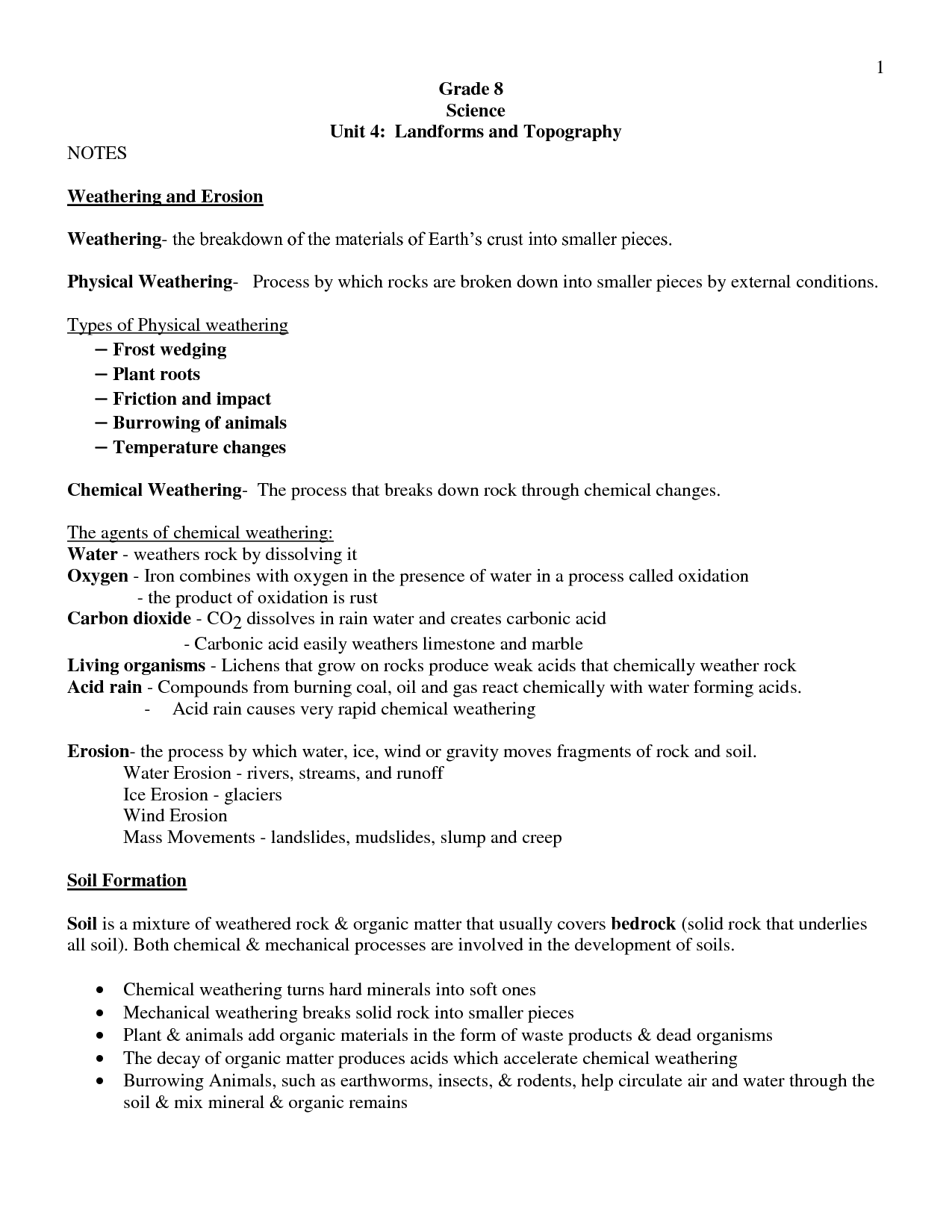

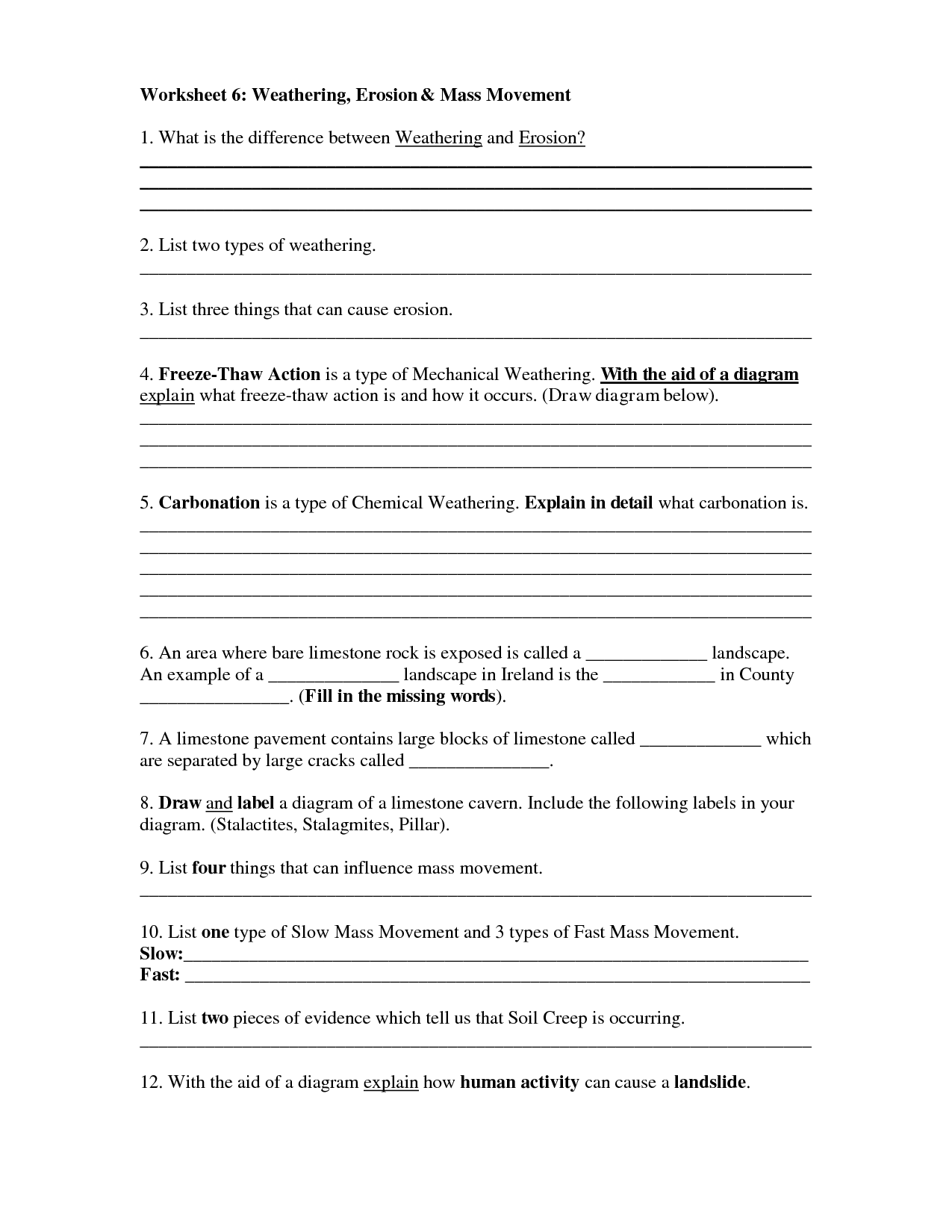
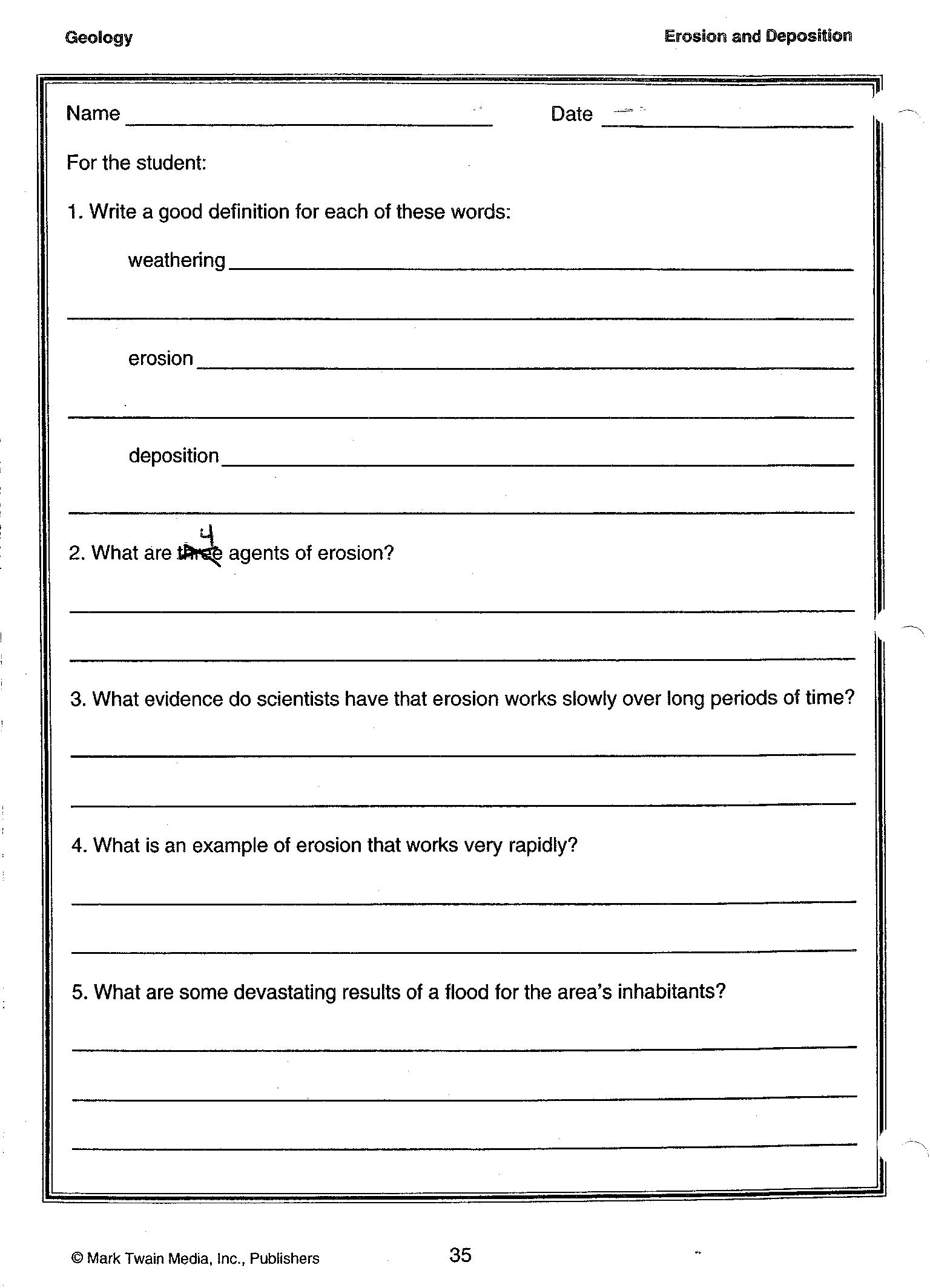
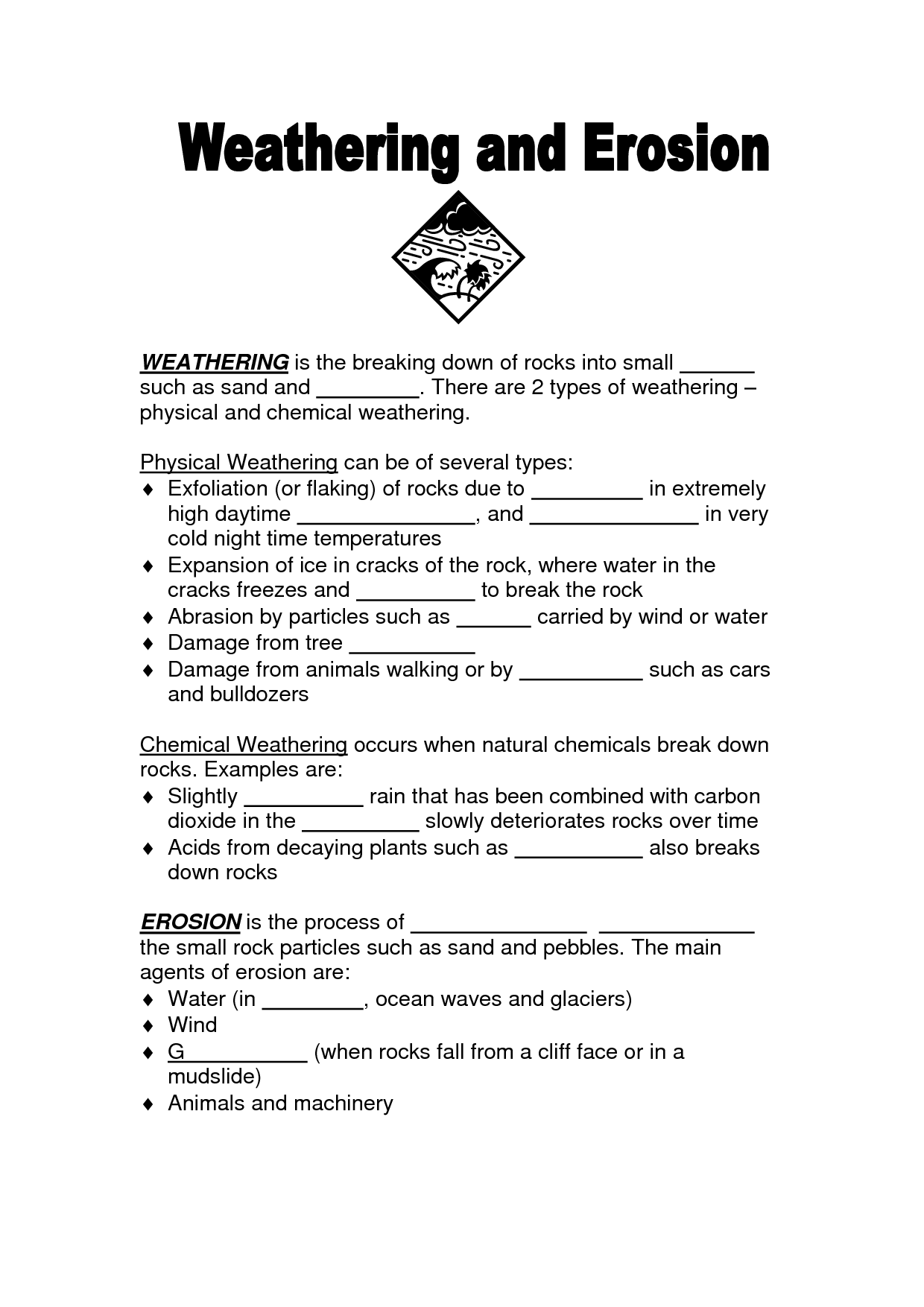
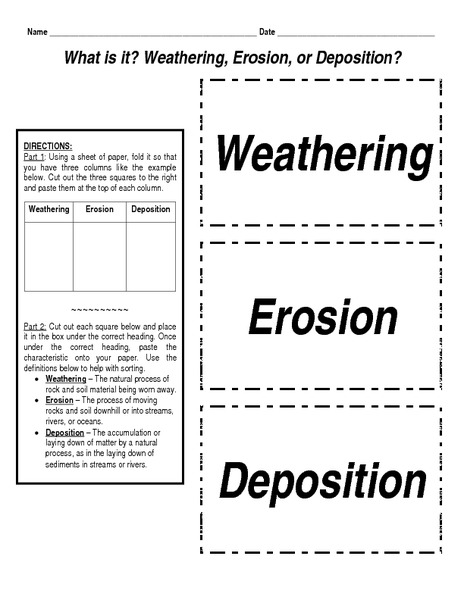

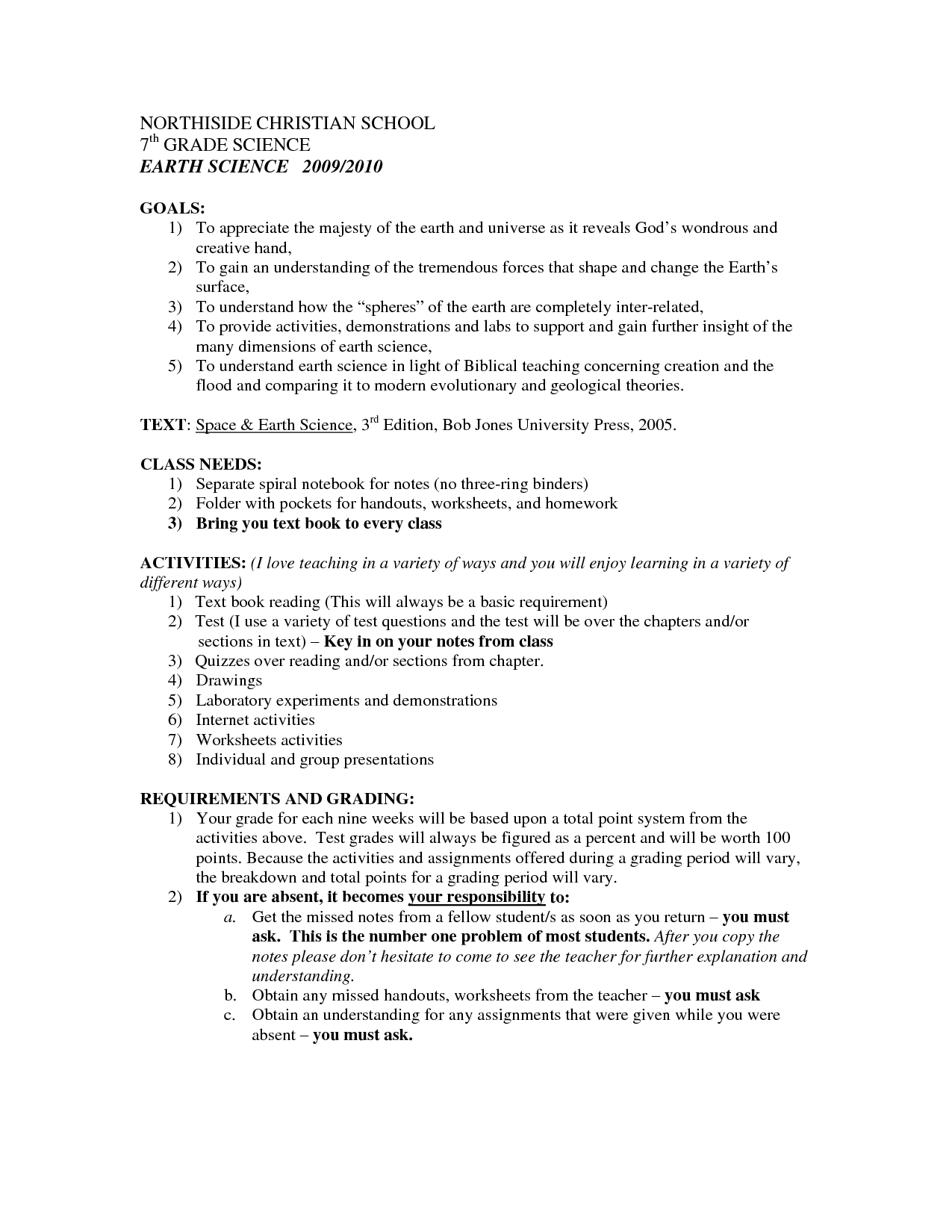
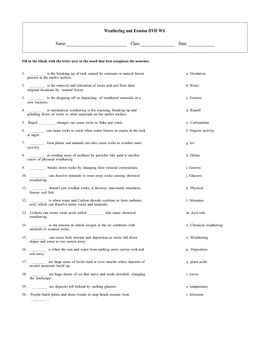
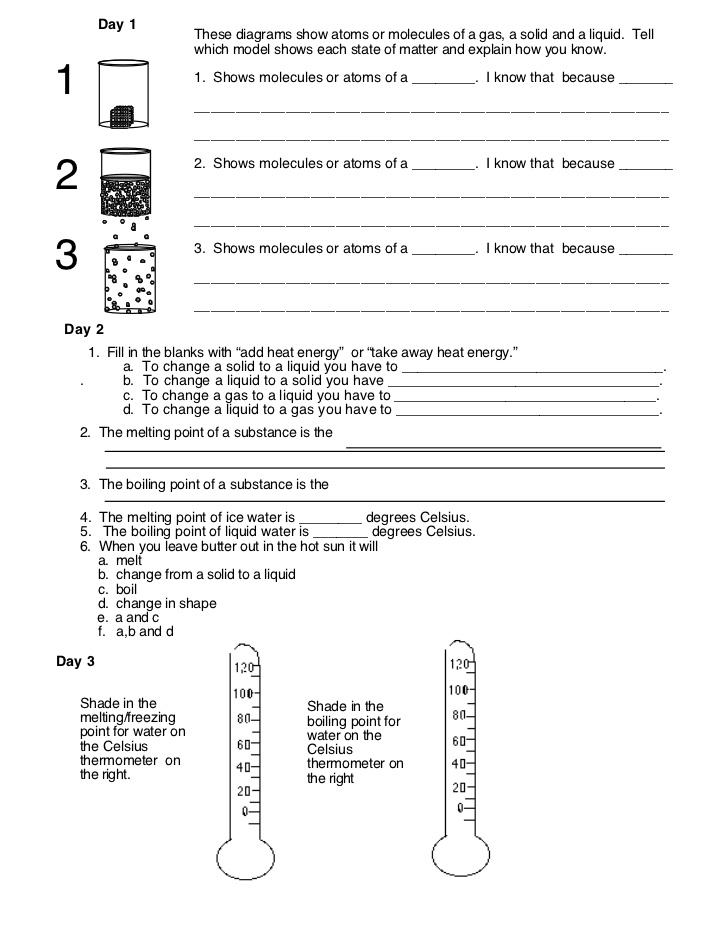














Comments